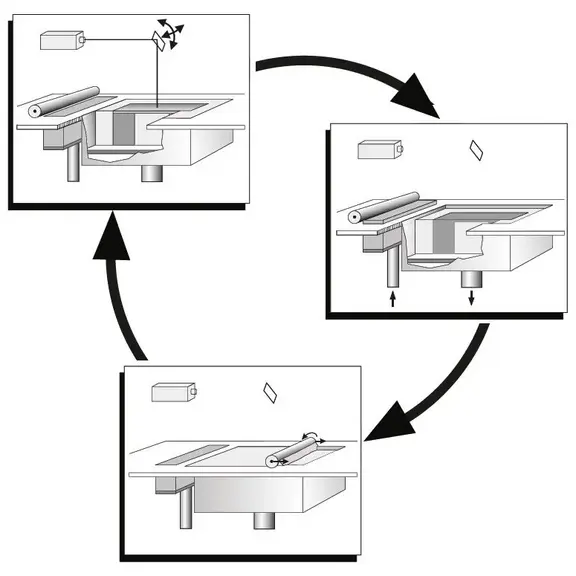
Selective laser melting is basically a powder-based printing process that works with light. Metallic powders are used to produce prototypes or small series.
As with all printing processes, the desired model must first be translated into the "language" of the respective printer. For this purpose, there is often device-specific software or variable software that must be fed with the corresponding data of the device. Through this software, the desired model is built up in layers and all process parameters for the upcoming print are defined. Here, for example, the orientation in space, support structures used or the layer height or power is set. This file is then transferred to the printer and a new job can be started.
In most cases, the pressure chamber is first inerted to prevent oxidation during the process. Once the chamber is inert, the gas is blown over the print bed to be exposed like a protective layer. In this way, the resulting smear can be minimized and removed. This is followed by three recurring process steps (see figure above):
Application of powder
Exposure (scanning)
Moving the table by the layer height
This procedure is repeated until the desired model has been completely produced. It is important to know that the desired geometry is welded onto the base plate, either directly or with a certain distance (a few millimeters) using support structures. The difference between the two is determined by the part geometry and orientation, as well as the post-processing. In the SLM process, support structures are basically necessary to dissipate the heat introduced into the part and minimize distortion based on this heat. After the printing job is finished, the entire working area must be cleared of unmelted powder. This powder is then reprocessed and can be returned to the printing process. The result is then a printing plate with a welded-on model. This must then be separated from the plate and prepared in various post-processing steps. Depending on the design of the supports used, these have to be removed with more or less effort in post-processing. The base plates must be mechanically processed after each construction job to remove the old supports completely and to provide a flat surface for the next job.
You are leaving the official website of Trier University of Applied Sciences